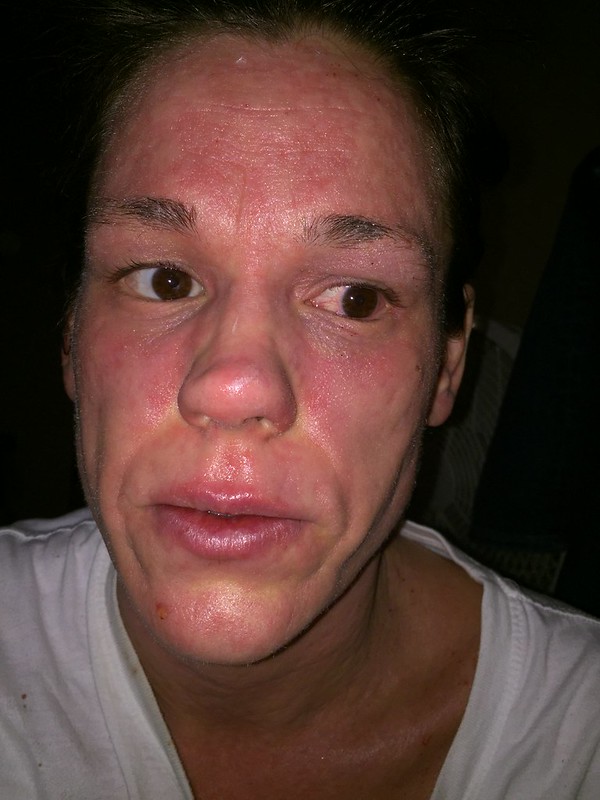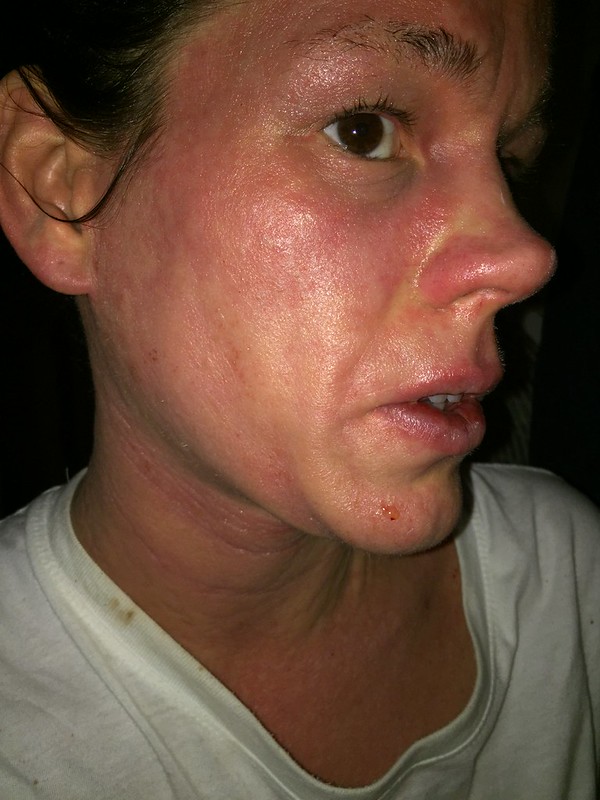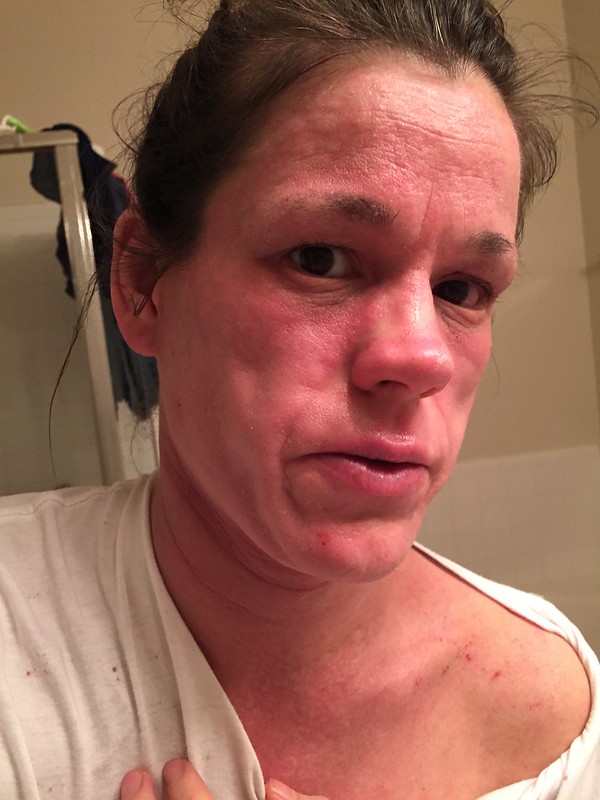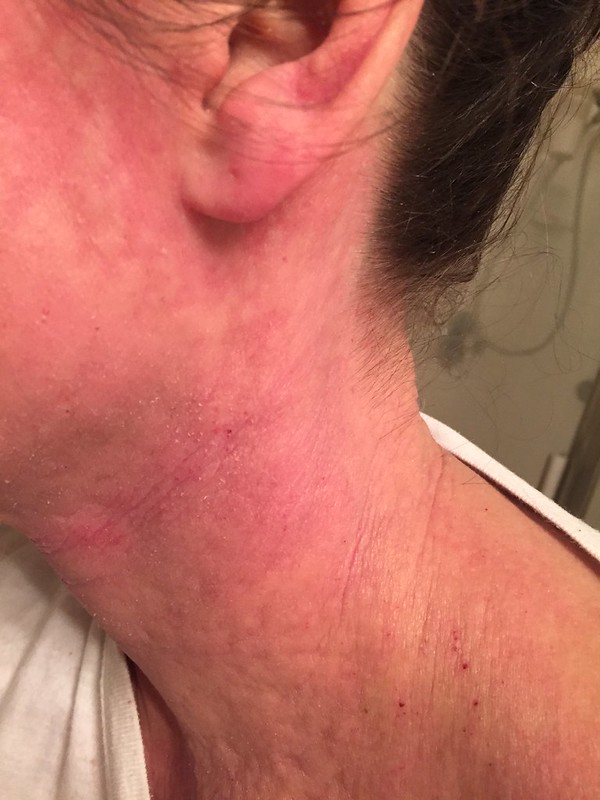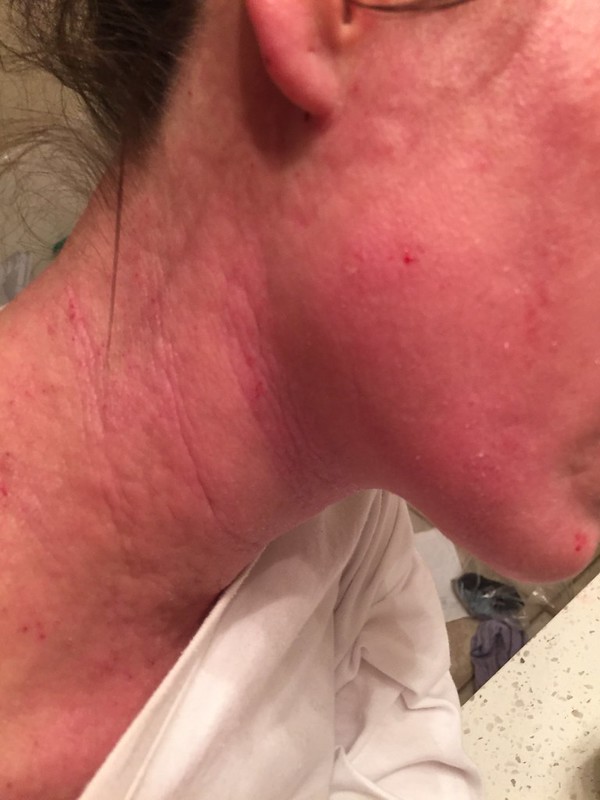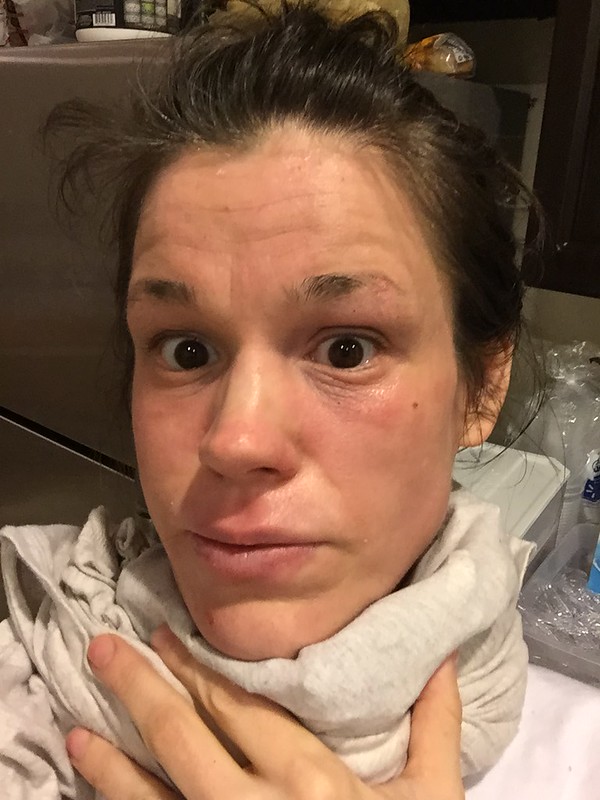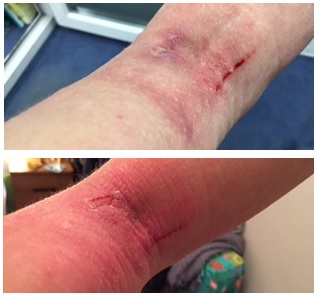Eczema is a skin condition with many parts to the puzzle – it is linked to hereditary skin condition, allergens (food, inhaled, contact and airborne), environmental factors (heat, humidity), bacteria colonization on skin (and how gut microbiome may affect allergic conditions), lifestyle factors (stress, hormonal change) and also suspected to be linked with diet/ water. Very often we may think of what we have eaten, rather than what we have applied on our skin. A moisturizer or topical prescription tend not to fall under our usual ‘list of suspects’ when we try to figure out what’s triggering the eczema.
This 2-part blog series aim to bring greater awareness of contact allergens, and how some of these may be the ingredients in your skincare products. Especially for pediatric patients, we have to be even more careful because:
- Babies’ skin barrier is thinner than that of an adult- making it extra vulnerable to chemical irritants (also greater transepidermal water loss and therefore, moisturizing is important)
- Increasing research showing that a strong skin barrier has protective effect against eczema, and reduce likelihood of food sensitization
- Babies have a larger surface area to volume ratio, therefore potentially the risk associated with chemical absorption is higher

Contact allergens is of particular importance to pediatric patients
I’m privileged to have dermatologist Steve Xu, MD MSc to help with this series. Dr Steve is currently a 2nd year dermatology resident at McGaw Medical Center of Northwestern University. He earned his MD from Harvard as a Soros Fellow, and a Masters in Health Policy and Finance from The London School of Economics as a Marshall Scholar. He completed a BS in bioengineering at Rice University. For his academic interests, Steve is focused on consumer education and the intersection between health policy and clinical medicine. His publications have appeared in The New England Journal of Medicine, and PLOS Medicine garnering broad press attention from sources such as CNN, The Washington Post, and The Los Angeles Times. Dr Steve has created a web resource for patients with eczema and contact dermatitis at itchyrash.org. See also Dr Steve’s publications at the end of this post.

Dr Steve Xu MD, MSc
Allergic Contact Dermatitis – What is it?
MarcieMom: Contact dermatitis refer to skin rash that is triggered by contact with an allergen/ irritant. If the immune response is that related to IgE, it would be allergic contact dermatitis; conversely, if the response is due to overtime exposure to the irritant (leading the skin to develop delayed-type hypersensitivity), it is irritant contact dermatitis.
The thing is a child can have all the different types of dermatitis – atopic, allergic contact and irritant contact.
MarcieMom: Dr Steve, thank you for joining me for this series. The different terms can get very confusing for parents of eczema children. How would you explain the different types of dermatitis to a patient?
Dr Steve Xu: Right now even within the scientific community, there’s a big debate on what exactly we should call ‘eczema’. At our institution (Northwestern University), this is how we break it down.
The term ‘eczema’ itself actually describes how a certain rash looks. Atopic dermatitis, allergic contact dermatitis, and irritant contact dermatitis all can cause an ‘eczema’ rash that looks exactly the same. Eczema used as a standalone term isn’t really specific.
For classic childhood ‘eczema’, we refer to this as atopic dermatitis. Allergic and irritant contact dermatitis is defined as a condition where an external agent leads to an eczematous rash. We define the difference between allergic and contact dermatitis here. Basically, an allergic contact dermatitis is defined by an immune-mediated response to an external agent applied to the skin. These reactions typically require only a very small amount of the agent to lead to a rash. Irritant contact dermatitis is not immune related but leads to an indistinguishable eczematous reaction. Typically, more of an external agent must be applied to cause a rash in irritant contact dermatitis.
MarcieMom: In practical terms, is diagnosing the type of dermatitis important? Or knowing the triggers are adequate for management of eczema?
Dr Steve Xu: Yes, definitely. An irritant contact dermatitis usually requires more of the external agent to cause a rash. This is practically important because if you only have an irritant contact dermatitis you may be able to tolerate products that are wash off or rinse off. If you have an allergic contact dermatitis, then we recommend avoidance altogether. Even a little exposure can cause a miserable rash.
Prevalence of Allergic Contact Dermatitis
There is increasing evidence that allergic contact dermatitis is underreported in children and while traditionally thought as unlikely for children, contact dermatitis is becoming more common.
MarcieMom: In the article1, the top ten pediatric allergens found in personal hygiene products are listed (with the first as having most percentage of children being hypersensitive to it):
- Neomycin – topical antibiotic, another contact allergen is over-the-counter antibiotic Bacitracin
- Balsam of Peru – also known as Myroxylon pereirae, chemically related to fragrance and thus used to screen for fragrance allergy
- Fragrance mix – Of the flowering plants, the Comositae family is the most likely to cause skin sensitization, such as chamomile, dandelion and ragweed; also cross-reactive with propolis (beeswax)
- Benzalkonium chloride – ammonium compound used as preservative, including in disinfecting wipes and eye drops
- Lanolin – natural oil from sebum of wool-bearing animals
- Cocamidopropyl betaine (CAPB) – used as a surfactant
- Formaldehyde – preservative, also associated with quaternium 15, imidazolindinyl urea (most common), diazolidinyl urea, bronopol, dimethyl-dimethyl hydantoin (this can get very tricky to memorize, readers can refer to this table created by dermapathologist in a previous interview)
- Methylchlorsothiazolinone (MCI)/ Methylisothiazolinone (MI) – likely to be in bubble baths, soaps, cosmetic products, and baby wipes
- Propylene glycol – previously common in moisturizers (but many brands stopped including propylene glycol: it has humectant properties and also an emulsifier) and topical steroids
- Corticosteroids – when using steroid creams, we have to be aware of its potency, but we may now have to know its likelihood of being contact allergen (we will discuss this next week)

Top 10 Pediatric Contact Allergens in Personal Hygiene Products
Other than the above 10, the other well-known contact allergens are cetylstearyl alcohol, sodium lauryl sulphate, pehnoxyethanol, parabens, TEA (triethanolamine) and vitamin E.
Nickel and cobalt are also common contact allergens but less likely that children will come into contact with them.
MarcieMom: It is interesting to note that the above can be found in personal care products, even in those marketed for children. I’m wondering if there is an increase in sensitization in personal hygiene/ skincare products? If so, why? (for instance, is it the increased use of products? Or increased awareness/ patch testing/ consultation)
Dr Steve Xu: The prevalence of contact dermatitis has remained stable overall but certain chemicals are representing a larger share of problems. This is related to industry trends. For example, as formaldehyde was phased out over the past 20 years in personal care products, we’ve seen a growing use of methylisothiazolinone as a preservative. It’s unsurprising that methylisothiazolinone contact allergy is rising rapidly.
Pediatric dermatologists have really worked hard to raise awareness among pediatricians and allergists about contact dermatitis in kids with atopic dermatitis. More than half of kids with atopic dermatitis will have a relevant positive patch test. In general, we’re arguing that kids with atopic dermatitis should be patch tested more and tested for food allergies less.
Parents need to know that just because a product is labeled “For babies” or “Safe for kids”, it doesn’t mean it’s any different than what products are sold for adults. These are just marketing claims. Statements like “sensitive skin safe” or “organic” also aren’t regulated. Even carefully reading the labels may not be completely fool-proof. Often times, manufacturers do not have to be specific about which fragrance they are using (different fragrances can cause contact dermatitis).
MarcieMom: Practically, this feels like being caught between a rock and a hard place. The baby’s skin loses more moisture, has less lipids and for babies with dry skin, even more so we have to moisturize. Now, we know the common contact allergens to avoid and of course, should take the effort to read the product label and make sure we’re not putting something on our babies with these allergens. YET, the more we put something on our babies, the more likely the skin can become sensitized to it overtime! (for instance, lanolin, CAPB weren’t previously contact allergens)
MarcieMom: Is there a strategy to moisturizing to reduce likelihood of contact dermatitis? For instance, rotating skincare products which one expert has previously mentioned.
Dr Steve Xu: We often have patients come into our clinic with classic allergic contact dermatitis and exclaim: “I haven’t changed my products in years!”. In truth, this is exactly how a contact allergy develops. It’s true that small, continued exposures over time train your immune system to develop an allergy.

Interview with dermatologist Dr Steve Xu, MD
With that being said and to the best of my knowledge, there are no well-designed clinical studies showing that rotating skincare products reduces the risk of future allergic contact dermatitis. I’m hesitant to recommend this strategy.
Here’s some practical advice to perhaps help answer this question. Let’s say you have a child with atopic dermatitis and it’s fairly well controlled. Over the course of a period of time, let’s say the atopic dermatitis has taken a turn for the worst and is not getting better with optimal therapy. Or, let’s say that that the atopic dermatitis is appearing in areas it never has before (e.g. belly button, waistband, wrist). Then, this is a time to consider whether there is a simultaneous allergic or irritant contact dermatitis. Patch testing would be recommended.
If there is a relevant positive patch test, than this is the time to follow a safe list. Severely limiting what skincare products or household products can be used in the absence of a patch-test proven allergen may be overkill.
MarcieMom: Thank you Dr Steve for helping us to understand more about contact dermatitis; for me, I’ve learnt that there is practical benefit of knowing the type of dermatitis one is suffering from, and being mindful of the possible development of contact dermatitis for an eczema child. Look forward to next week where we will discuss more about skincare product, prevalence of contact dermatitis in kids and corticosteroids.
References:
- Hannah Hill, Alina Goldenberg, Linda Golkar, Kristyn Beck, Judith Williams & Sharon E. Jacob (2016): Pre-Emptive Avoidance Strategy (P.E.A.S.) – addressing allergic contact dermatitis in pediatric populations, Expert Review of Clinical Immunology, DOI: 10.1586/1744666X.2016.1142373
For some of Dr Steve’s publications, see below:
- Xu S, Walter JR and Bhatia A. Online Reported User Satisfaction with Laser and Light Treatments: Need for Caution. Dermatologic Surgery. Published online September 9th, 2016. DOI: 10.1097/DSS.0000000000000862.
- Xu S, Kwa M, Agarwal A, Rademaker A, and Kundu RV. Sunscreen Product Performance and Other Determinants of Consumer Preference. JAMA Dermatology. 2016. 152(8):920-927.
- Walter JR and Xu S. Therapeutic Transdermal Drug Innovation from 2000-2014: Current Status and Future Outlook. 2015. Drug Discovery Today. 2015. 20(11):1293-1299.
- Walter JR and Xu S. Topical Drug Innovation from 2000 through 2014. JAMA Dermatology. 2015. 151(7):792-794.
- Xu S, Heller M, Wu PA and Nambudiri VE. Chemical Burn Caused by Topical Application of Garlic Under Occlusion. Dermatology Online Journal. 2014. 20(1). URL: https://escholarship.org/uc/item/88v527wg.
Eczema Blues






